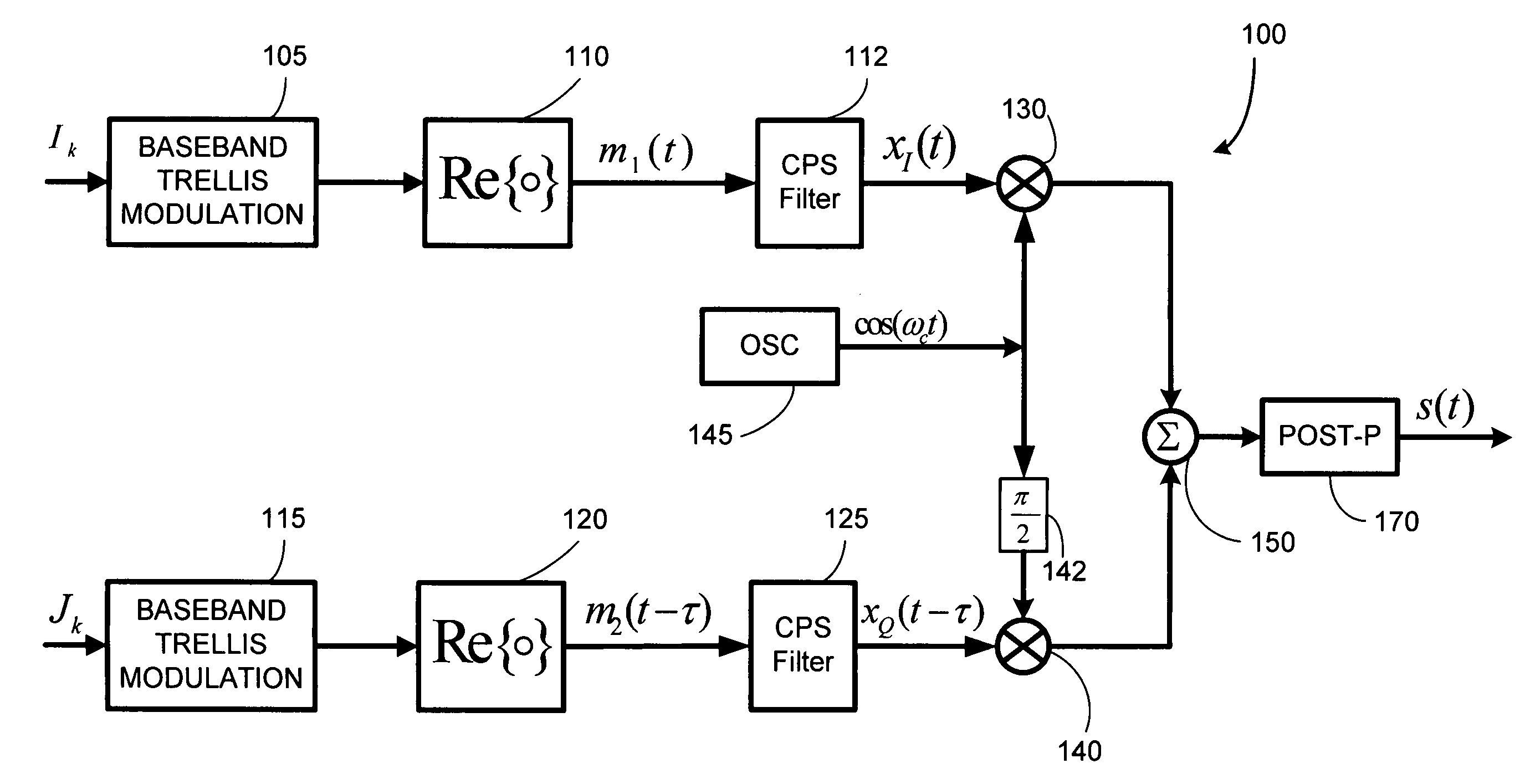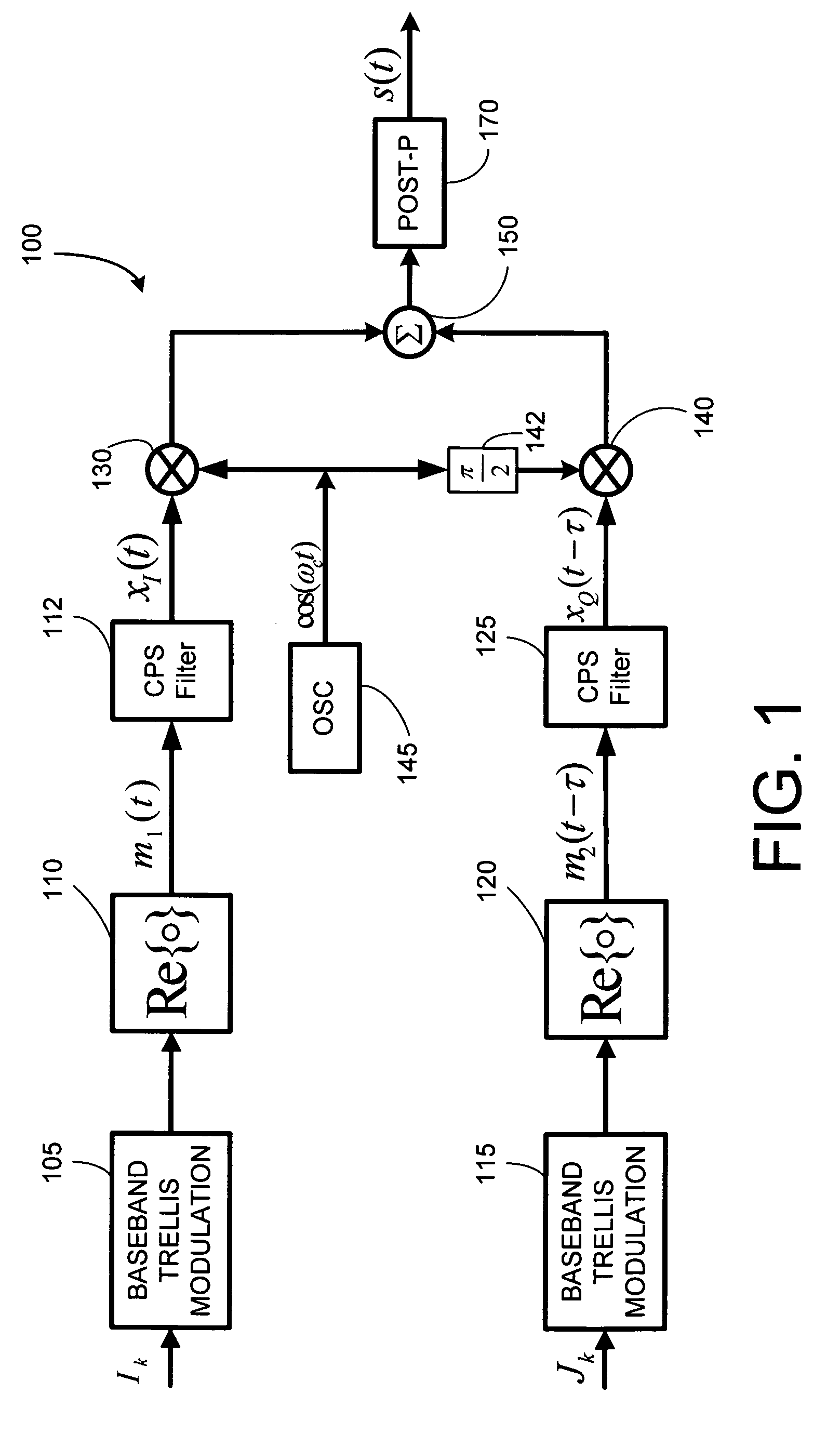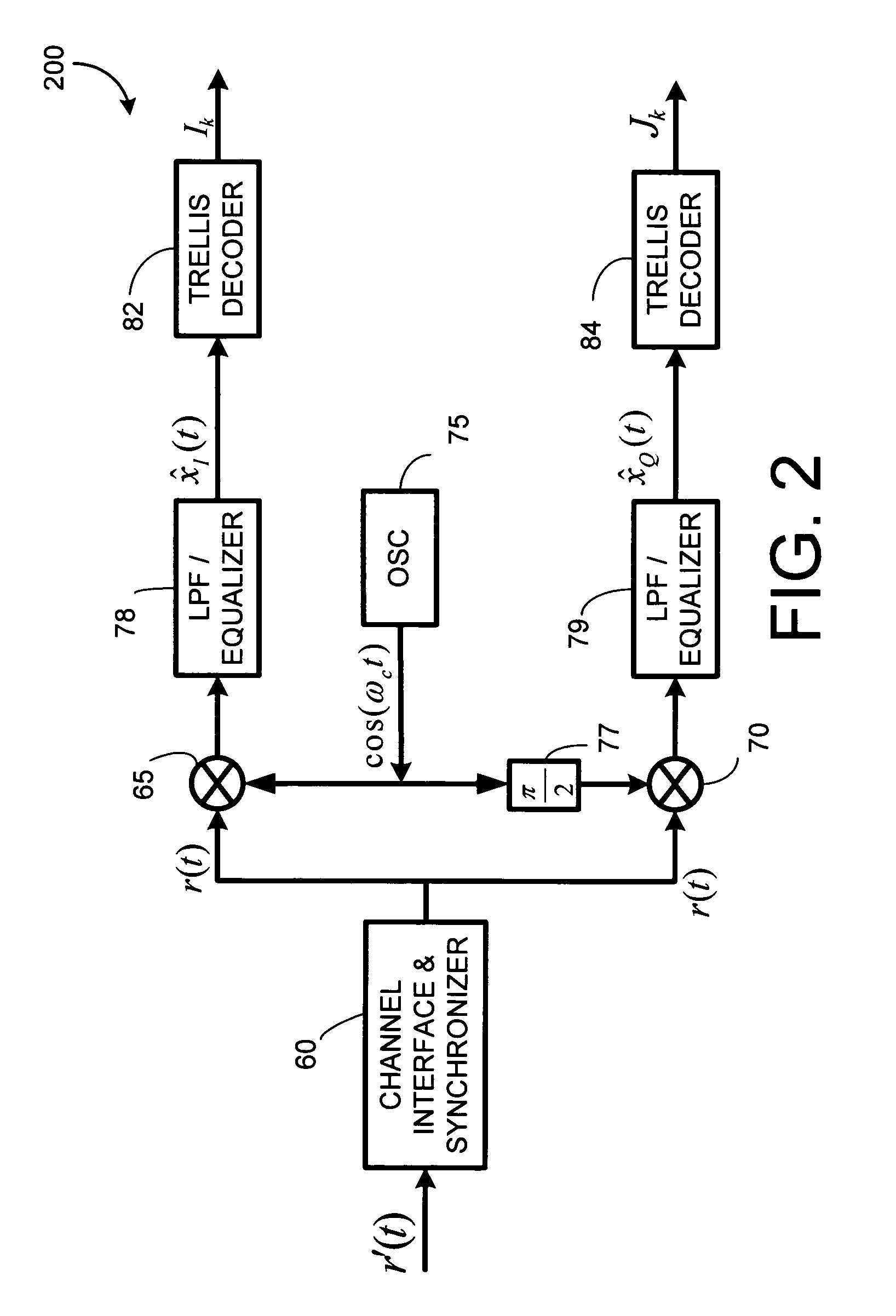Compact pulse shaping for QM-MSK and PAM/QAM reception
- Summary
- Abstract
- Description
- Claims
- Application Information
AI Technical Summary
Problems solved by technology
Method used
Image
Examples
Embodiment Construction
[0032]U.S. Pat. No. 7,532,676 teaches that any component PAM-MSK signal, m(t) (on I or Q), of a QM-MSK signal is a two state system that employs four different waveforms mi,j(t), transitioning from state i to state j (with i,j=1,2), where,
m1,1(t)=cos(-π4+πt2T),m1,2(t)=cos(-π4-πt2T)(3)m2,1(t)=-m1,2(t),m2,2(t)=-m1,1(t).(4)
QM-MSK signals and regular MSK signals have the same normalized squared minimum distance of dmin2=2.0, but QM-MSK signals have a spectral variation that is narrower by a factor 2 as compared to regular MSK signals when the spectral variation is normalized to the bit bandwidth. Additionally, U.S. Pat. No. 7,532,676 describes a broader class of QM-CPM signals that have different state structures other than (3)-(4), and the present invention can apply to any such other QM-CPM state structure, or even more generally, to any signal that follows an amplitude trellis. As discussed in the CPS PR PAM / QAM descriptions below, the present invention can also be applied to PAM typ...
PUM
 Login to View More
Login to View More Abstract
Description
Claims
Application Information
 Login to View More
Login to View More - R&D
- Intellectual Property
- Life Sciences
- Materials
- Tech Scout
- Unparalleled Data Quality
- Higher Quality Content
- 60% Fewer Hallucinations
Browse by: Latest US Patents, China's latest patents, Technical Efficacy Thesaurus, Application Domain, Technology Topic, Popular Technical Reports.
© 2025 PatSnap. All rights reserved.Legal|Privacy policy|Modern Slavery Act Transparency Statement|Sitemap|About US| Contact US: help@patsnap.com



